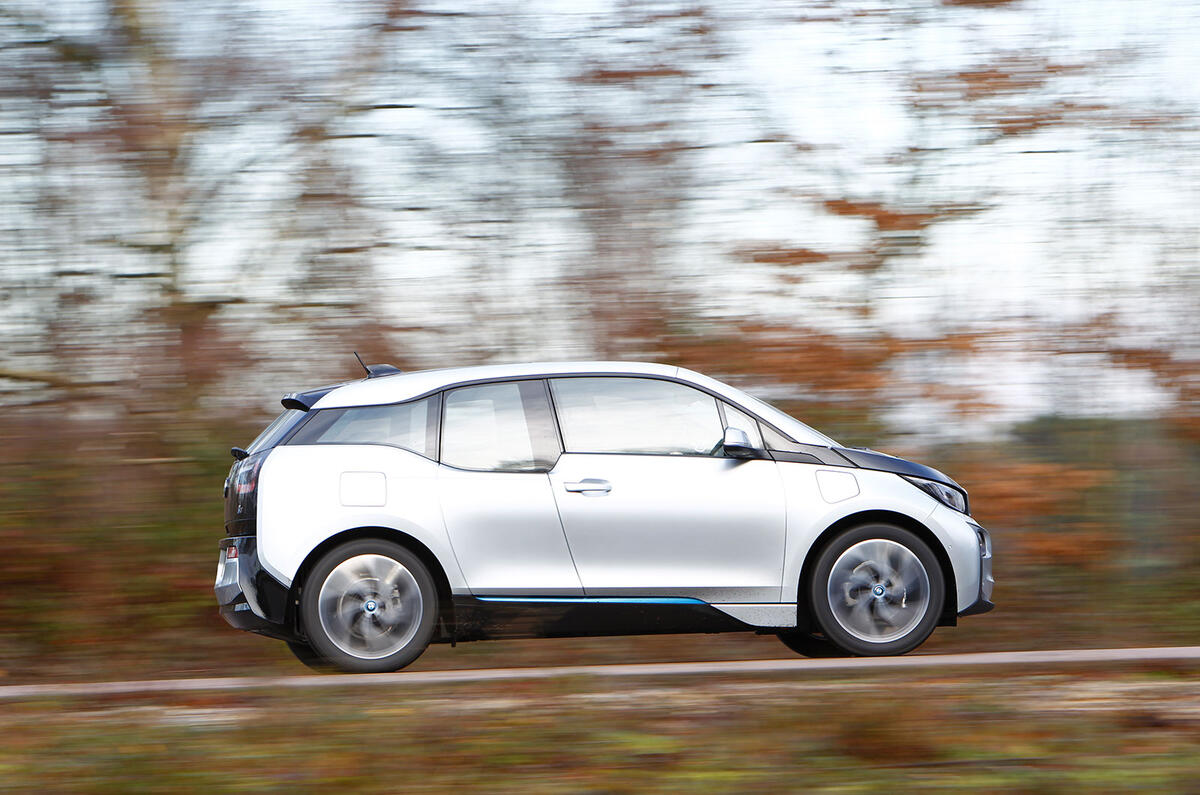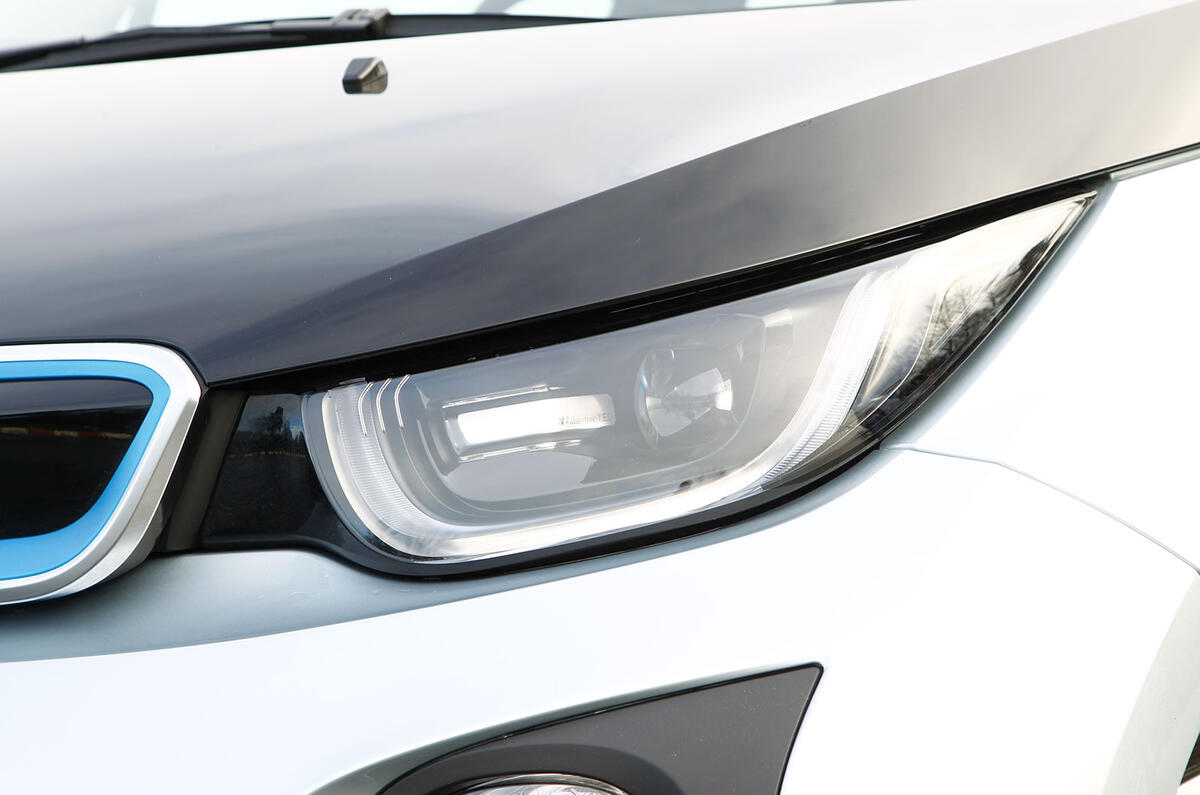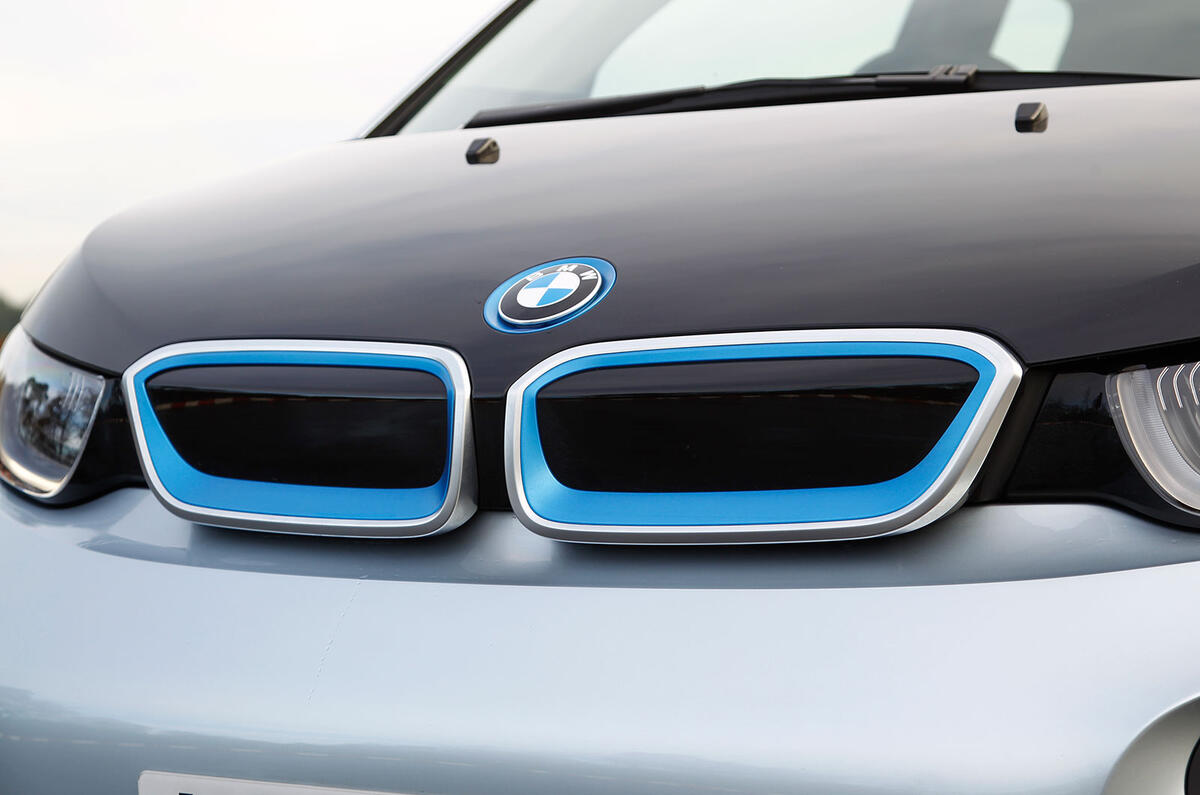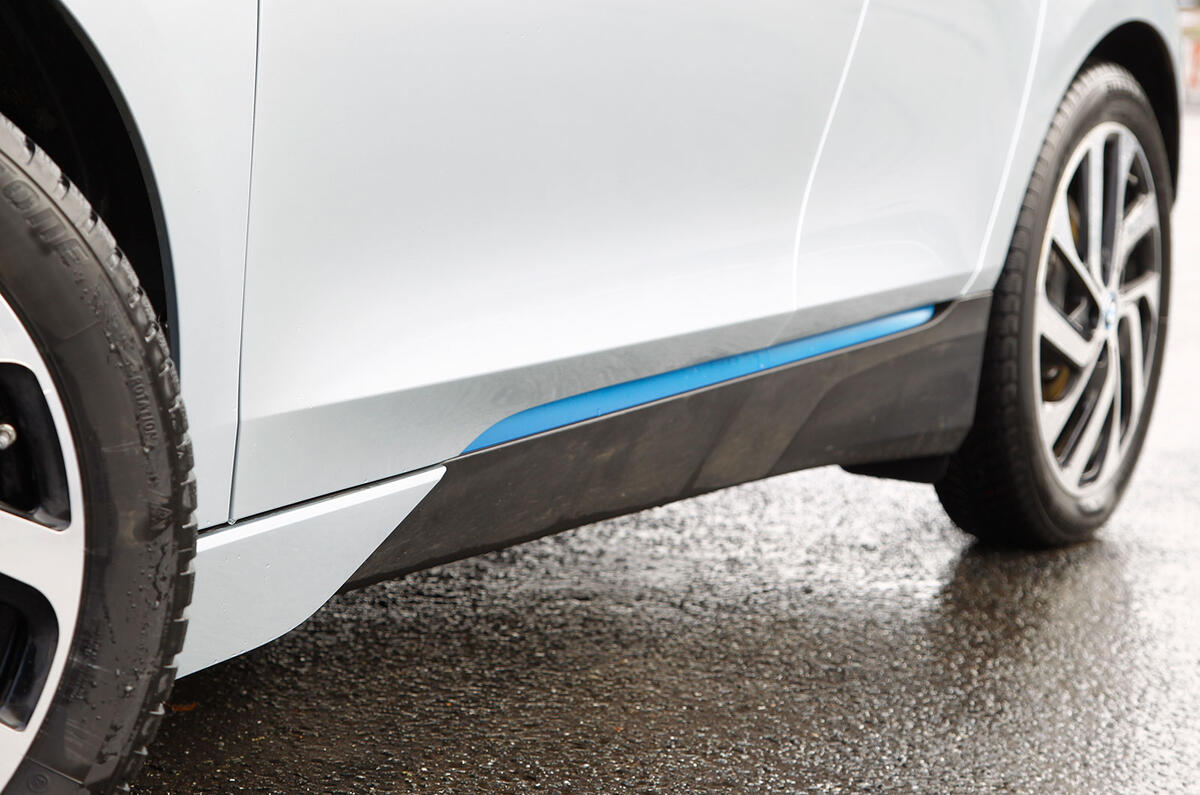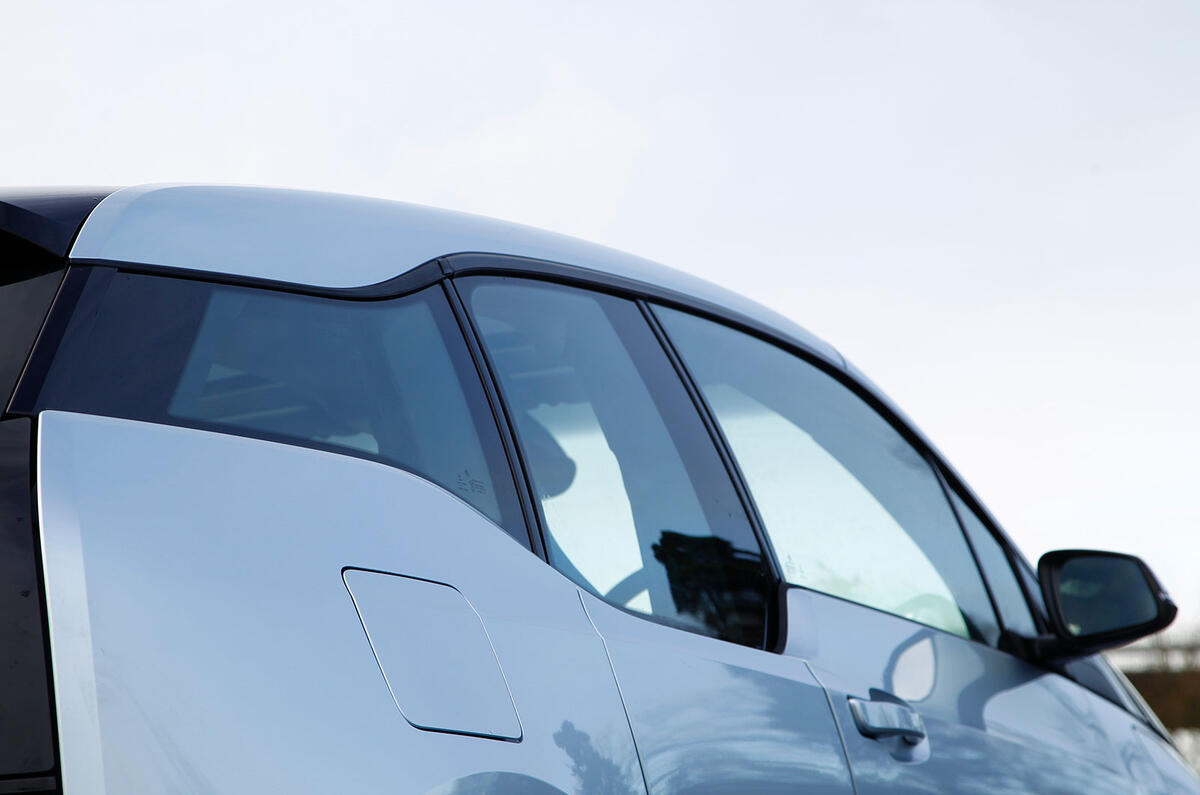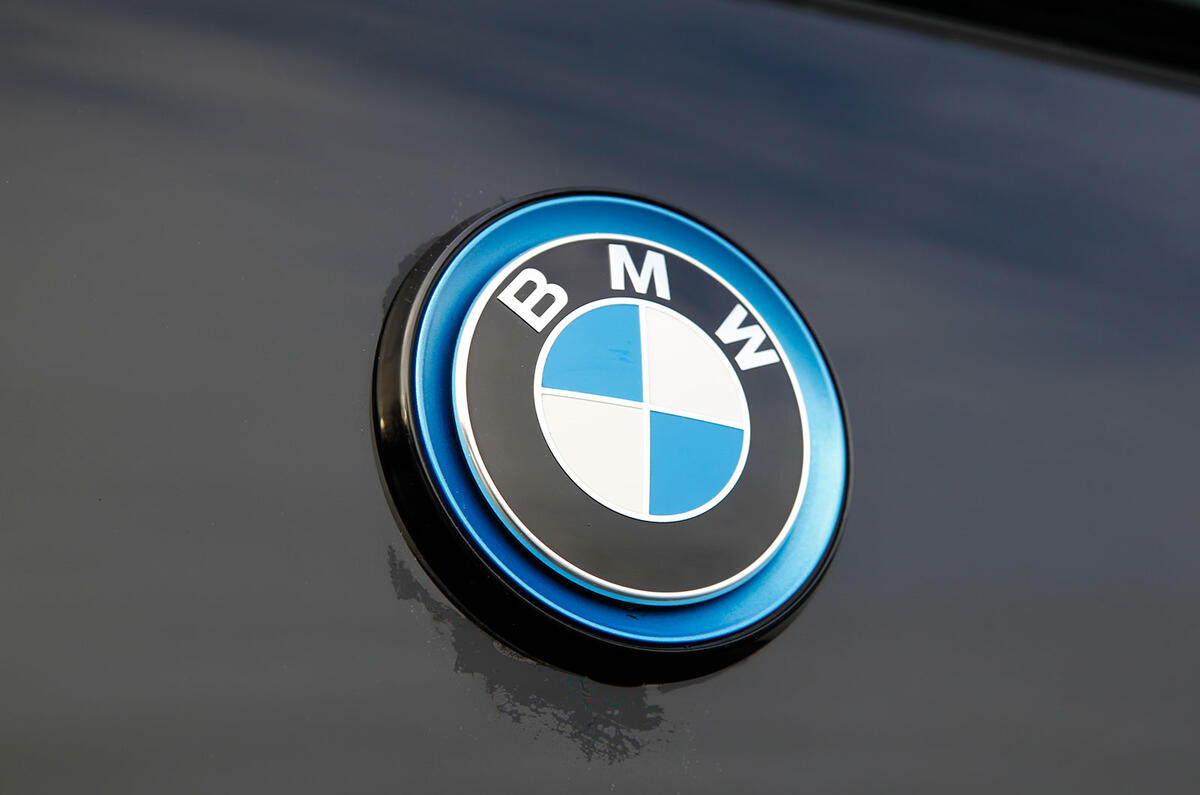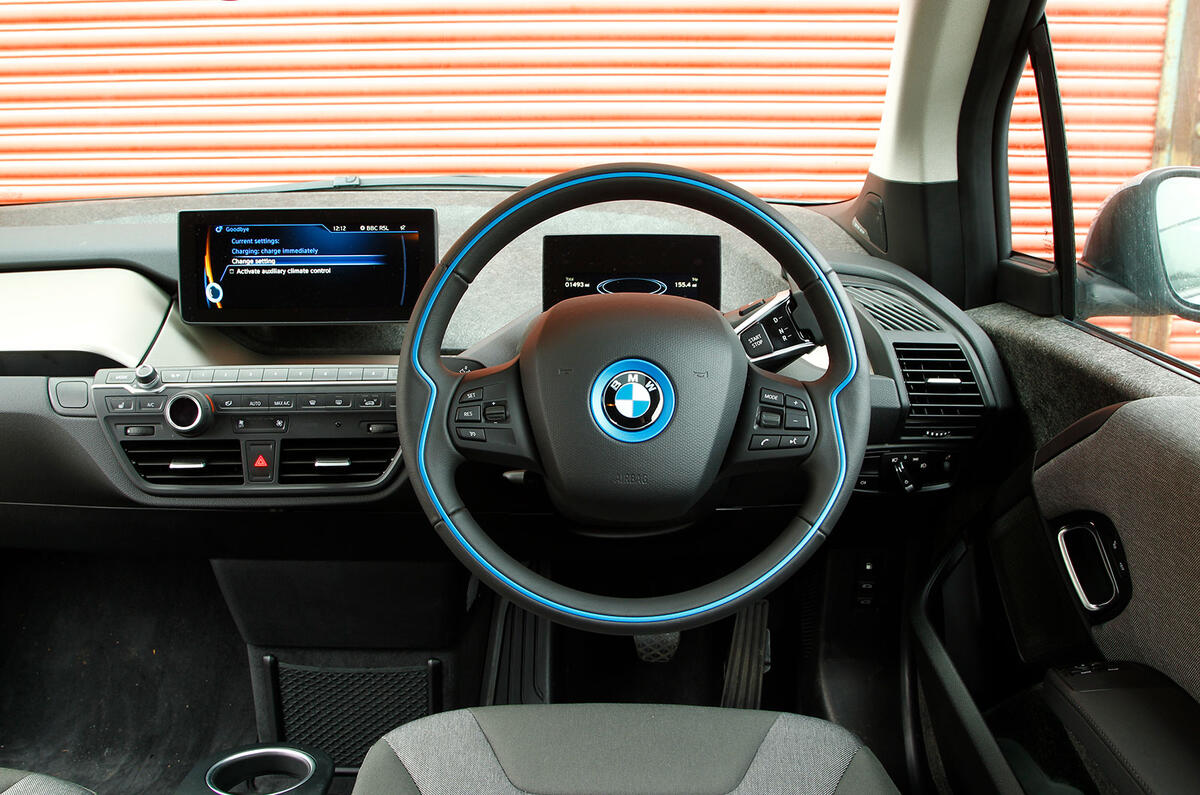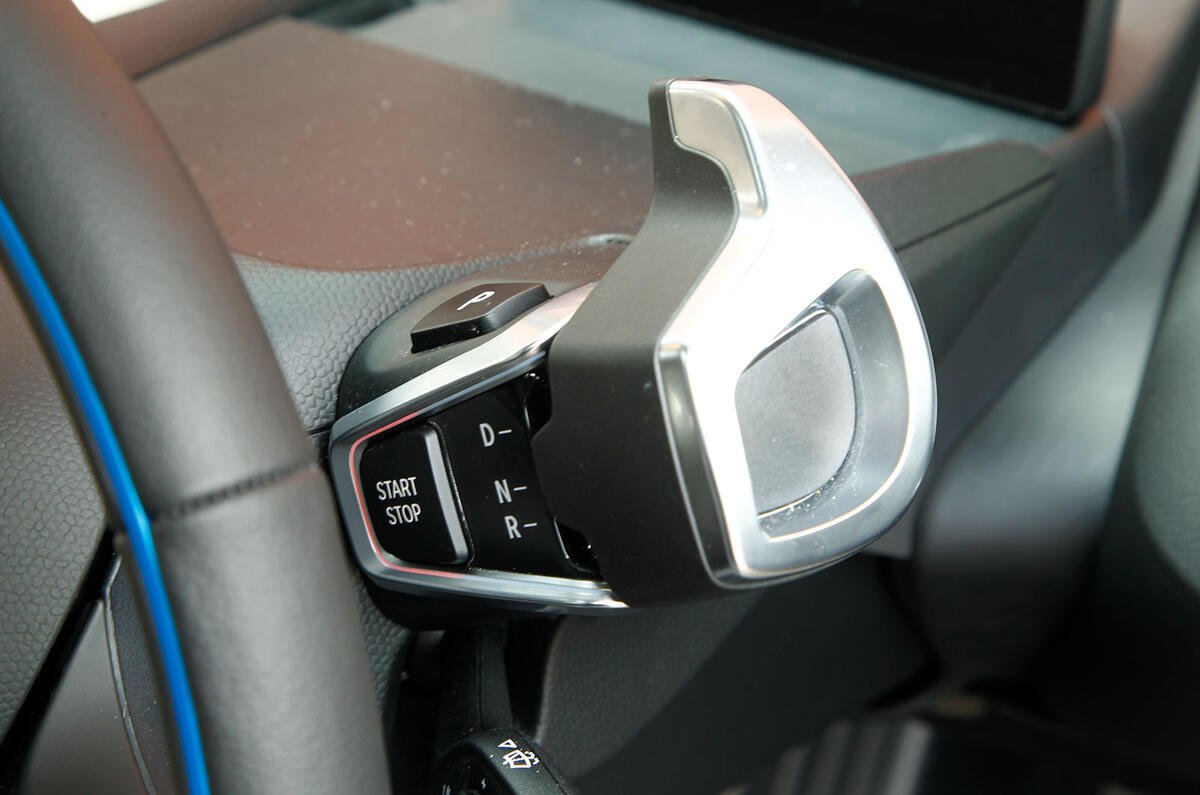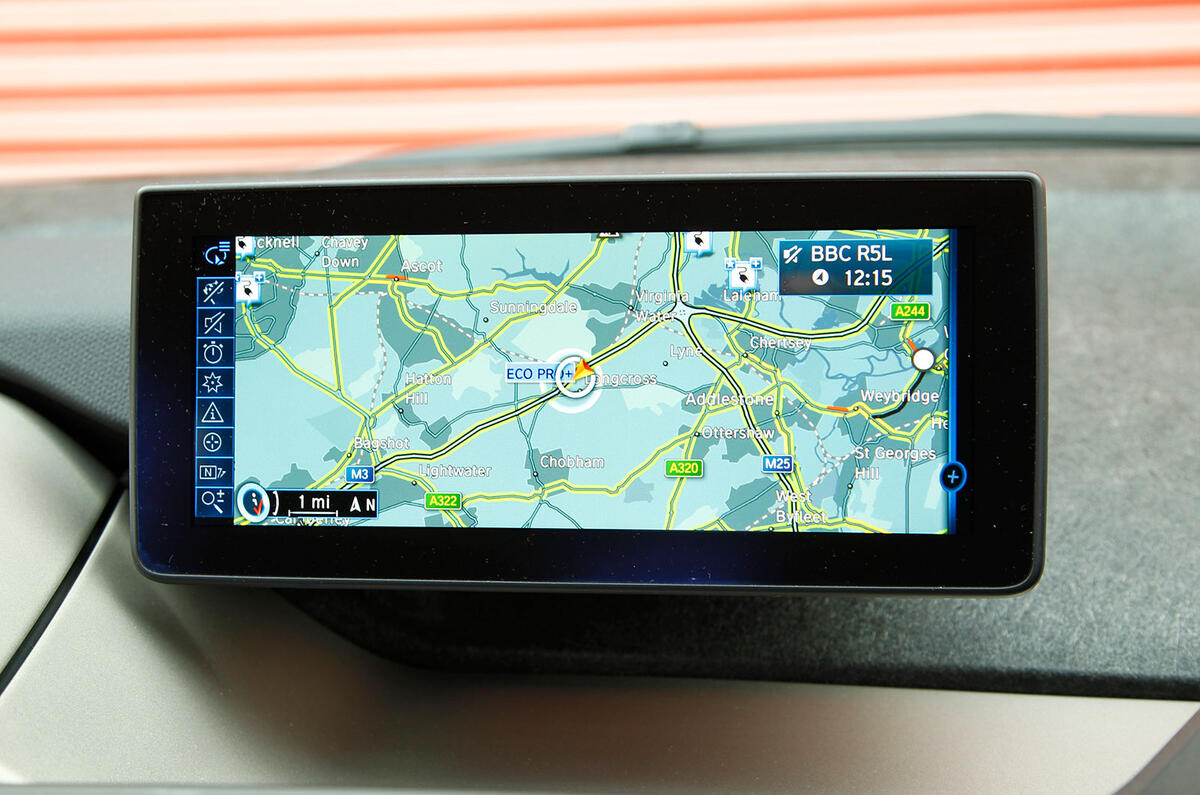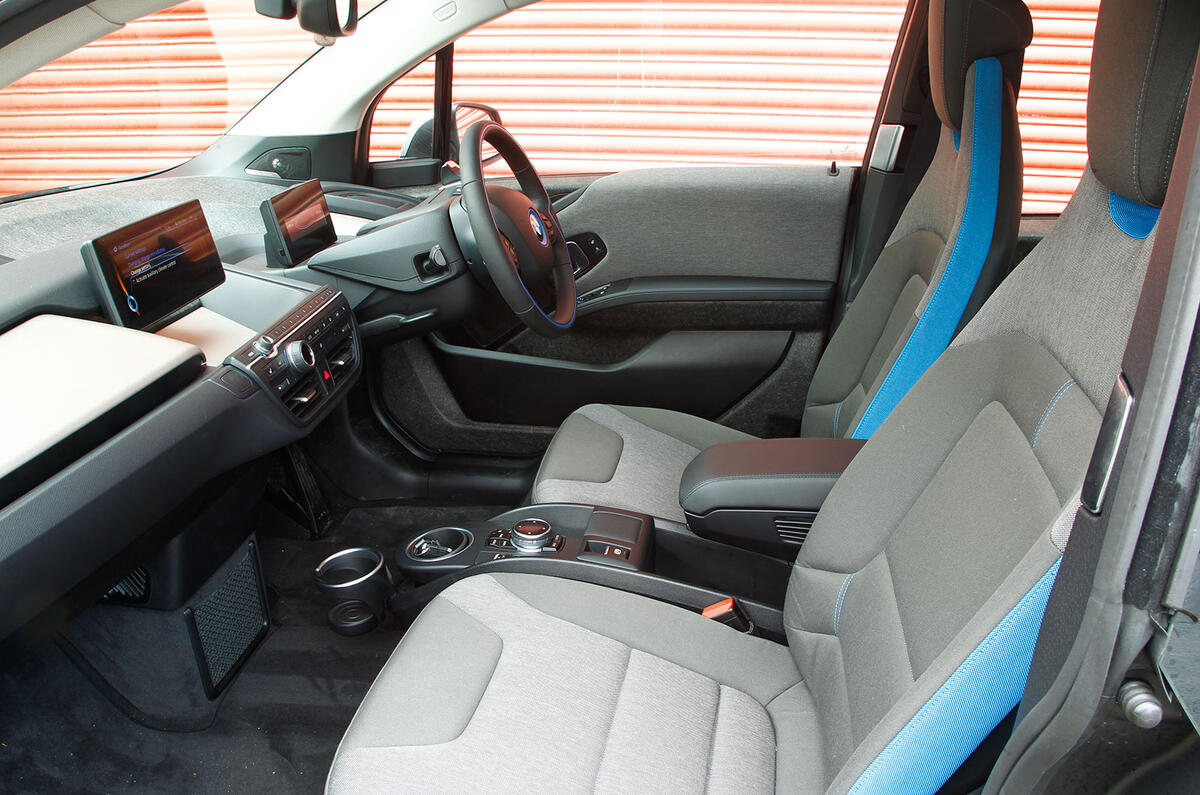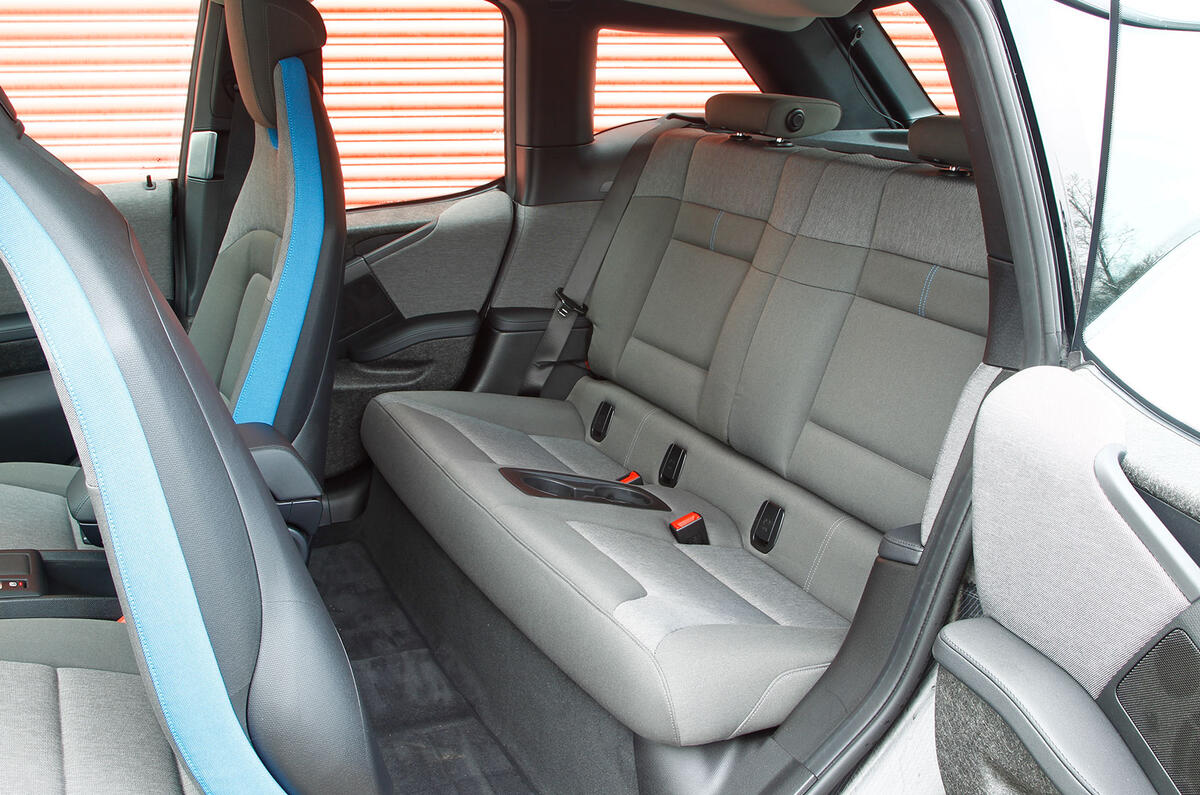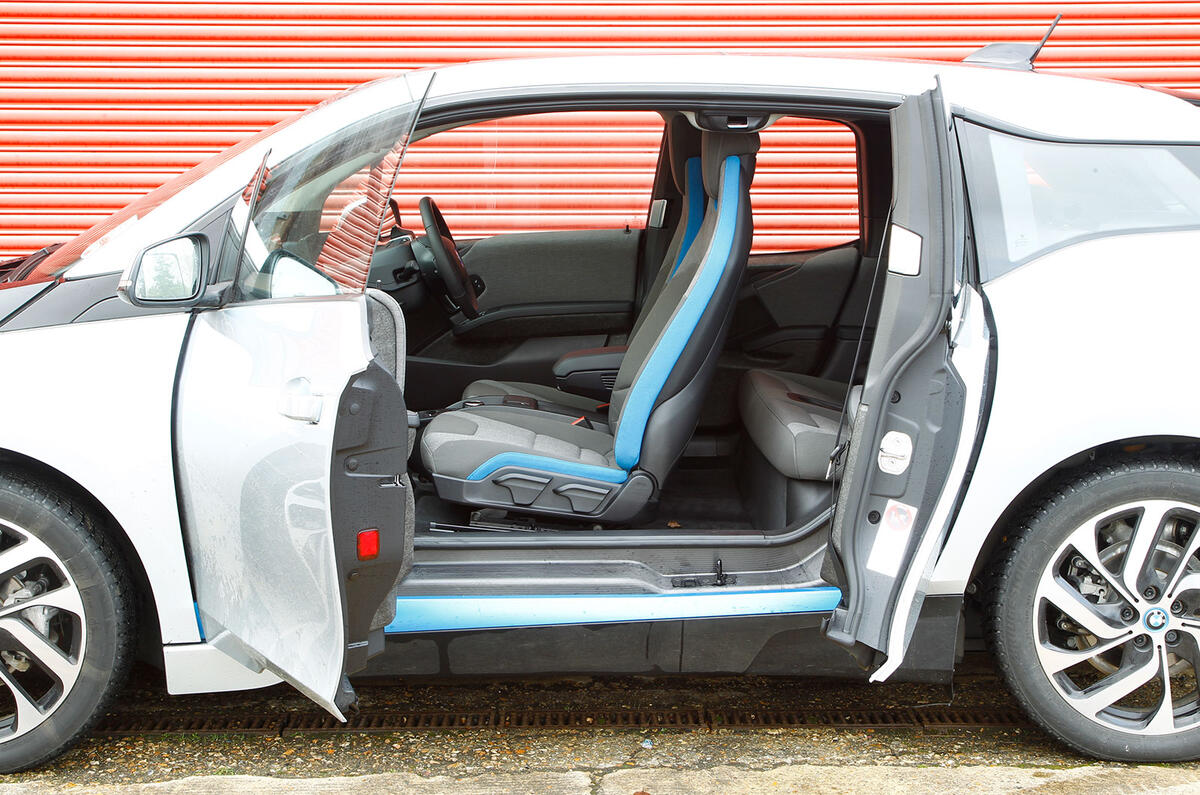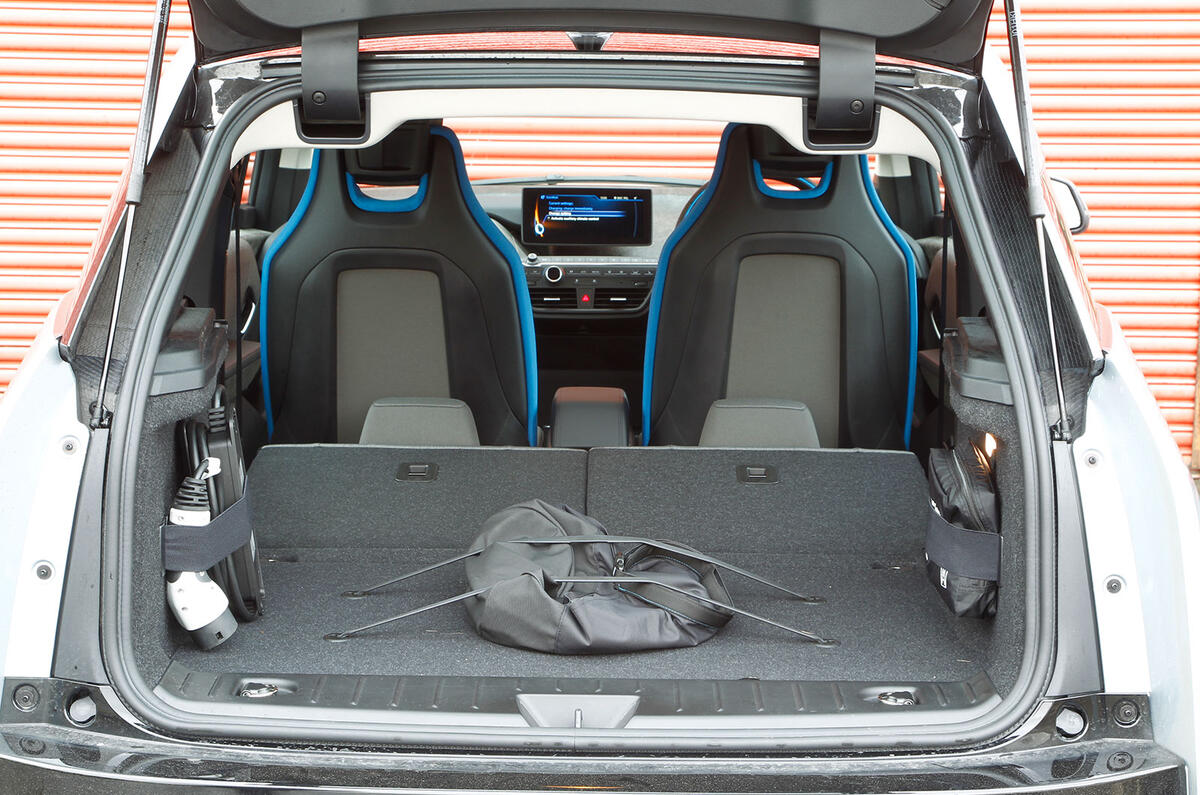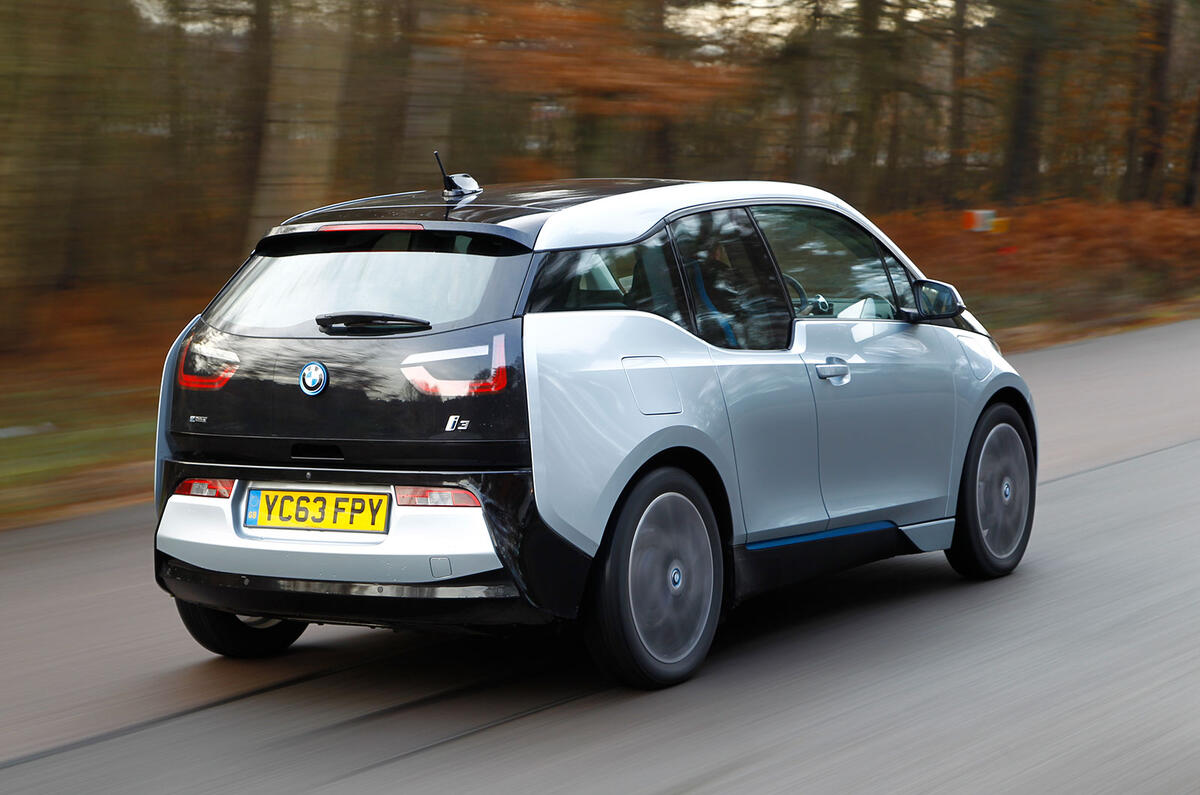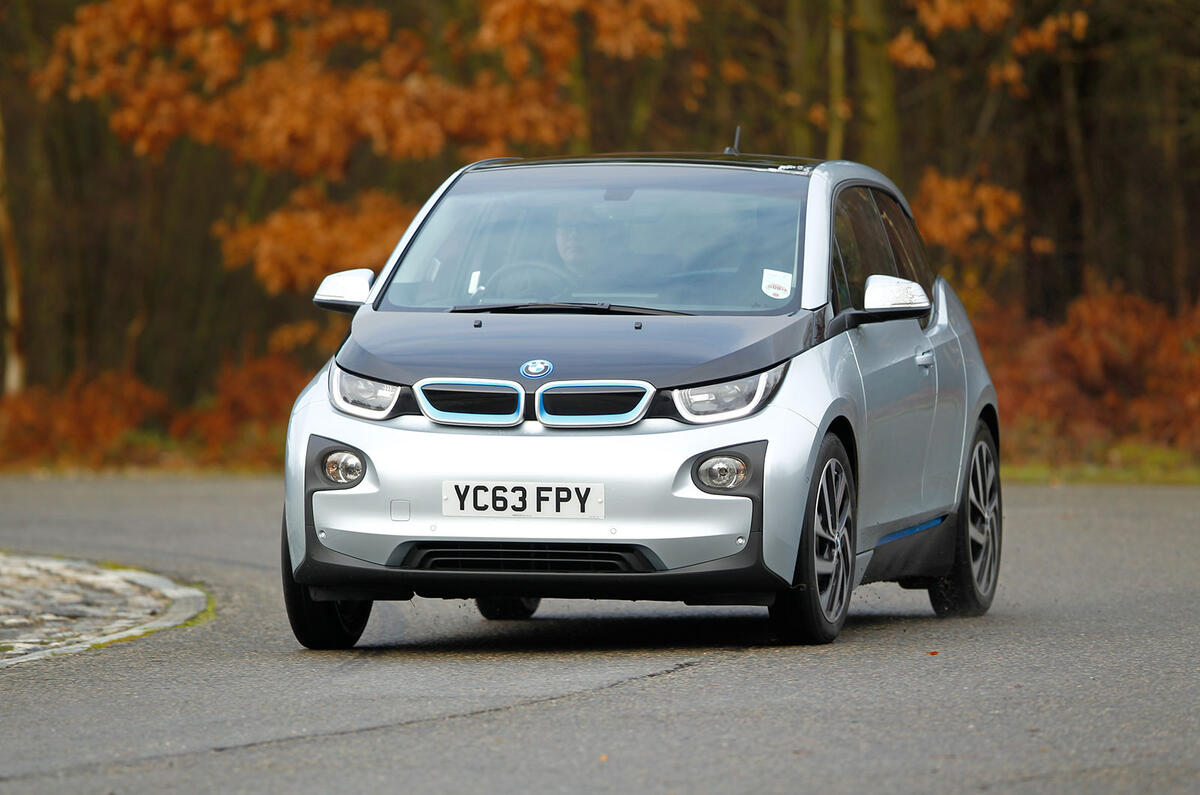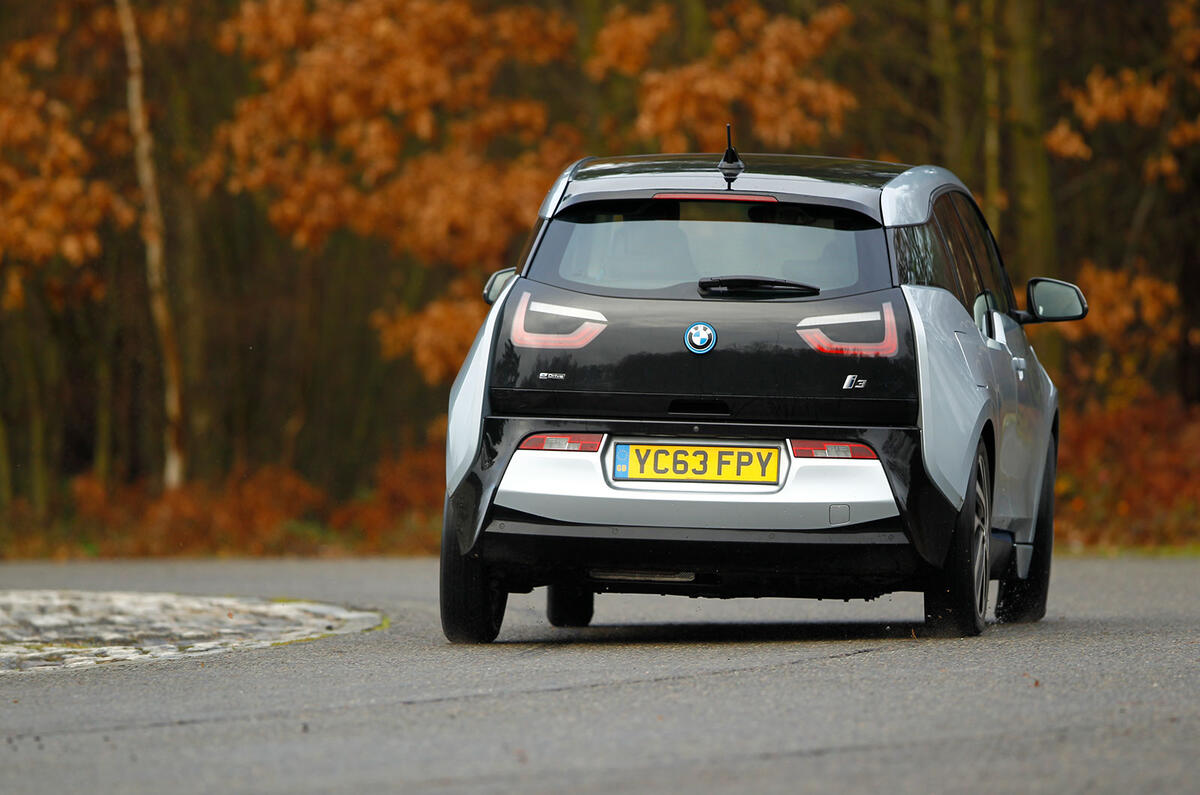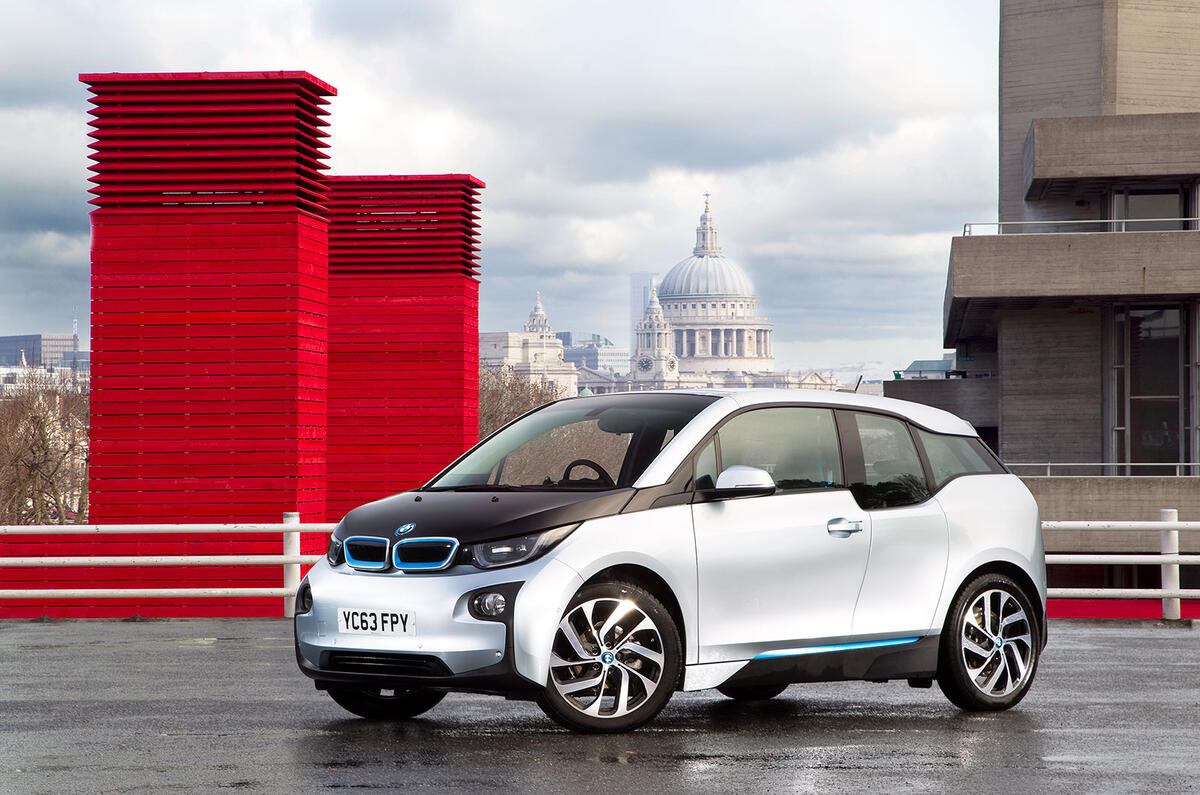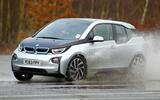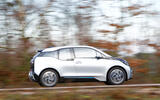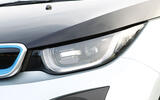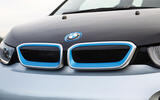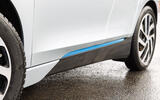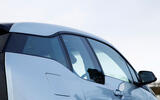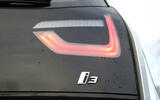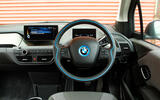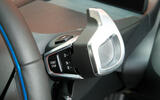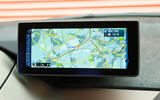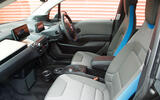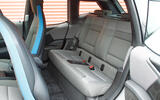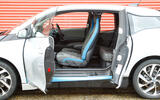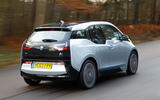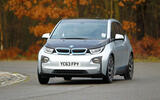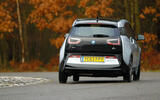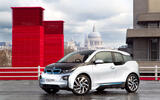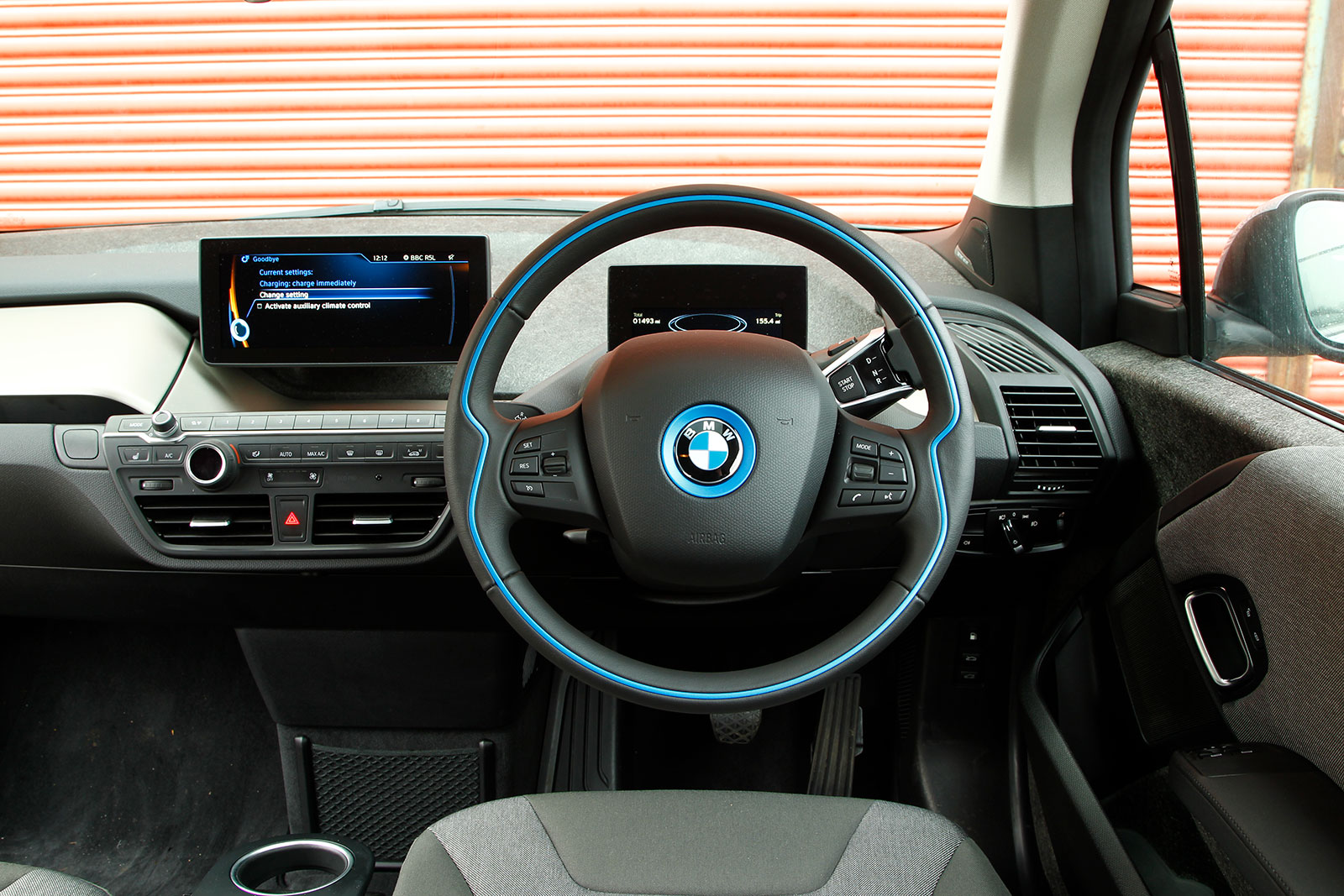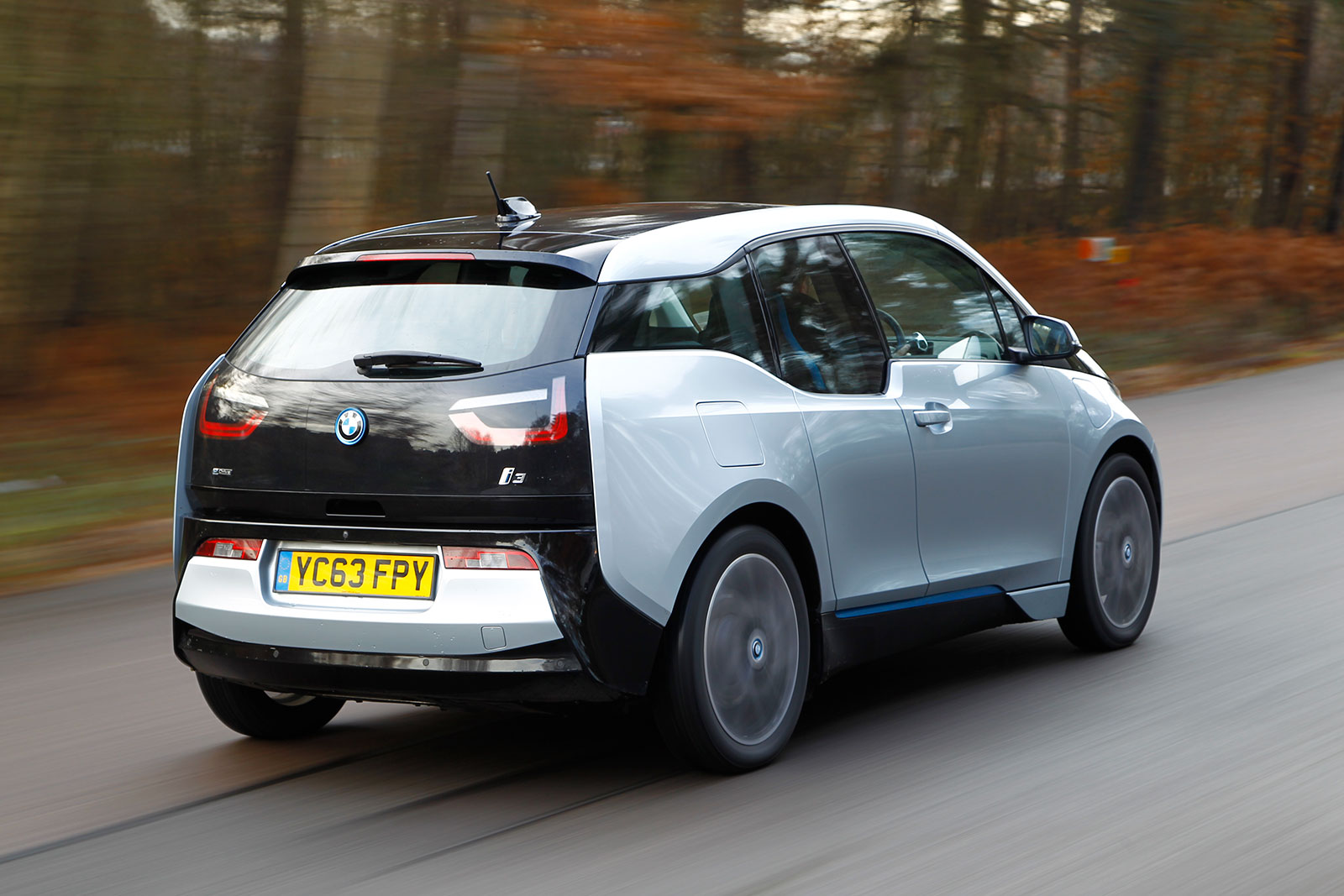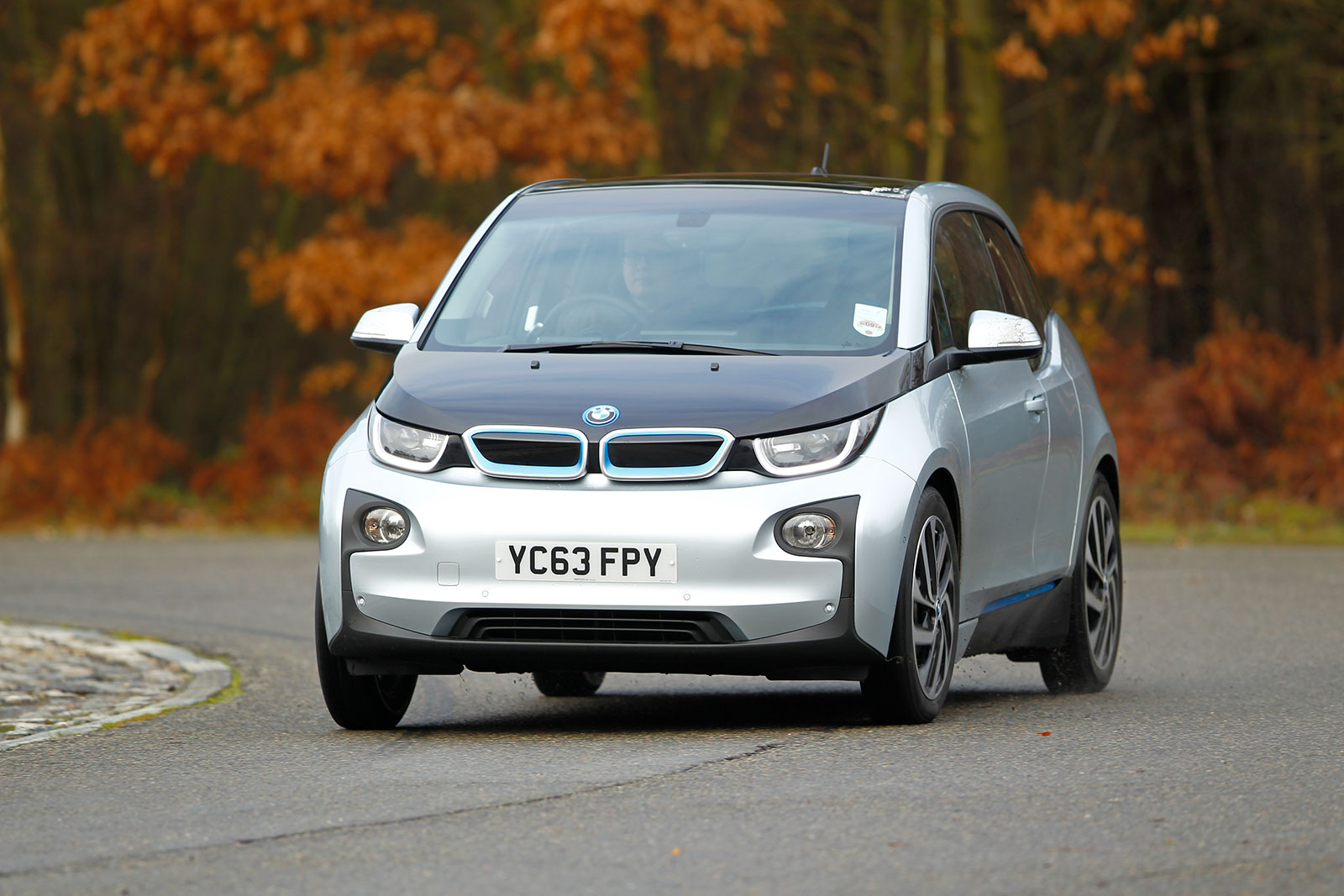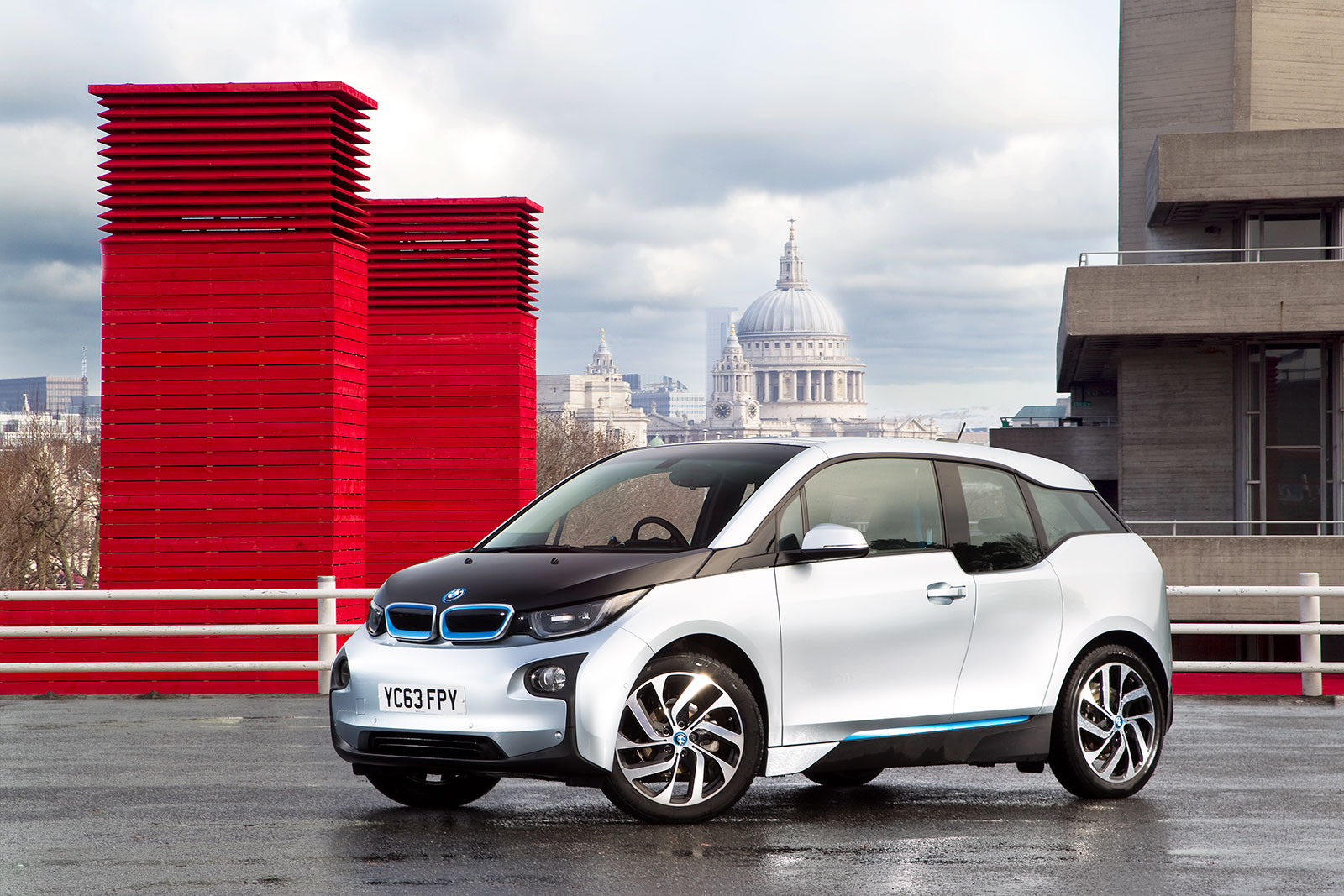For anyone accustomed to BMW’s established cabin architecture, the interior’s appearance was quite a step change. You sat elevated and upright on firm, flat seats, confronted not by a darkly imposing dashboard but by a stripped-back, light-toned design flooded with natural light from the enlarged windscreen. There was an airiness, spacicousness and cheeriness to the i3's interior.
What separated the i3 from rivals (aside from its complete lack of a foot-hindering transmission tunnel) were the cherry-picked locations where either its price point or eco credentials poked through.
BMW removed the instrument cluster completely, opting instead for a pin-sharp screen ahead of the driver. Most other functions were corralled on to an even larger, 10.25in widescreen display controlled by the familiar, thigh-high iDrive.
The backdrop for these handsome slabs of LCD was a swathe of PUR-Sensatec, an entirely recycled trim material that closely resembles moulded packaging. The layout of what switchgear was left was impeccable, and the single steering column stalk – including drive select – was the icing on the modernity cake.
The i3’s structural integrity may have permitted the elimination of B-pillars and the fitment of coach doors, but the opening remained slender and too distant from the floor to be labelled especially convenient. Nor was the space they access particularly roomy. Even worse, because they interlocked, the back couldn't be accessed without first opening the front door.
Nevertheless, the i3 provides one of the most appealing environments available for under £5k.
The i3 on the whole was certainly very well equipped from new with an iDrive system chocked full of BMW ConnectedDrive Services, sat-nav, DAB radio, Bluetooth and a USB port. It also came with heated front seats, rear parking sensors and auto lights and wipers thrown into the package.
However, BMW wanted the i3 to be more than a mere driving machine, but a personal statement, and it created four ‘interior worlds’, each with their own design style.
There was standard-fit Atelier trim, Loft, Lodge and Suite options, which upgraded the seats from cloth to premium leather and the dashboard from recycled material to eucalyptus wood
When the i3 was facelited in 2017, it was given a moderate refresh with a new front bumper and rear apron, while LED headlights and a new generation of iDrive helped to give the small EV added sparkle.
You could also add options such as a rear-view camera, collision and pedestrian warning, city braking, active cruise control and traffic jam assistant.
The iDrive system was also updated, and the i3s came with a larger, 10.25in screen as standard. As for its design, the i3s didn't look that different, except for the creative use of gloss black exterior trim to give the car a sporty profile. It also had 20in alloy wheels as standard.





